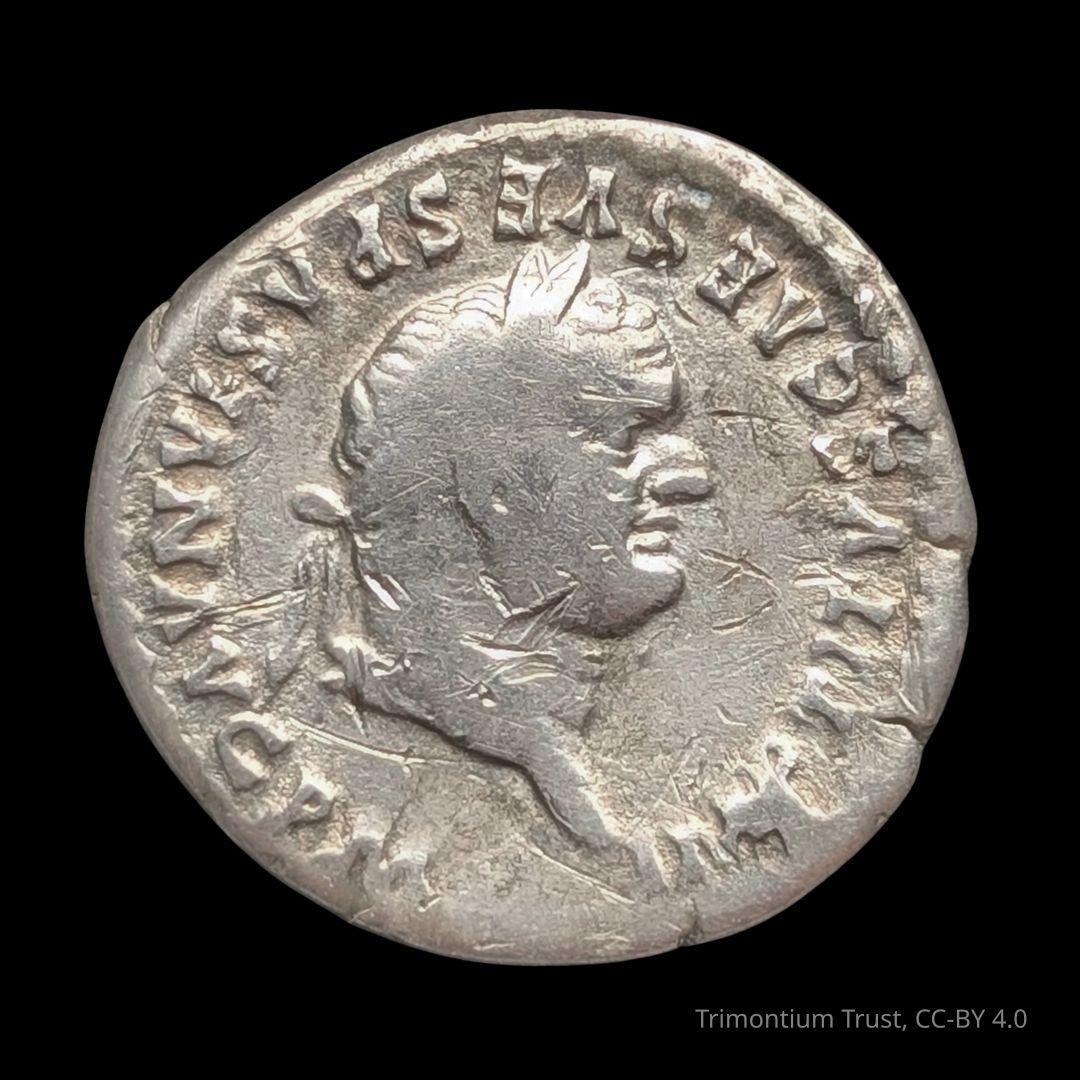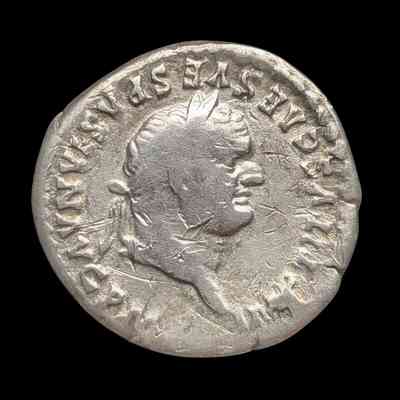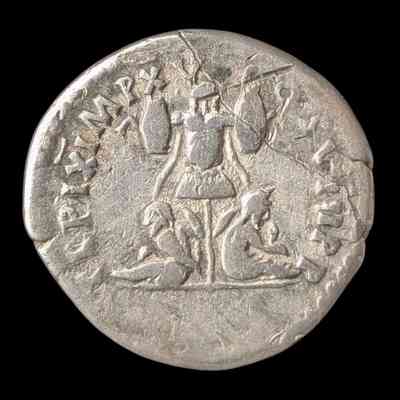Denarius of Titus
Name/Title
Denarius of TitusEntry/Object ID
E.2025.2Description
Denarius of Titus. IMP TITVS CAES VESPASIAN AVG P M, laureate head right / TR P IX IMP XV COS VIII P P. Two captives with their arms bound behind their back sit at the base of a 'tropeaum' (a trophy monument construction from the spoils of war - usually swords, spears and shields), man on left, woman on right. RIC II 104.Use
Standard circulation coinContext
Issued on Titus' XVth triumph - his victory in Caledonia at the hands of general AgricolaCollection
Trimontium TrustCategory
Coin
Numismatics
Acquisition
Notes
PurchasedMintage
Mint
RomeDate made
79 - 81Time Period
1st century ADPlace of Origin
* Untyped Place of Origin
RomeManufacture Method
StruckCoin Details
Obverse
Description
IMP TITVS CAES VESPASIAN AVG P M, laureate head right.Transcription
Imperator Titus Caesar Vespasianus Augustus, Pontifex Maximus.Translation
Supereme commander (Imperator) Titus Caesar Vespasian, emperor (Augustus), high priest.Reverse
Description
TR P IX IMP XV COS VIII P P, two captives, back to back, seated at the base of a trophy, man on left, woman on right.Transcription
Tribunicia Potestate Nona, Imperator Quintum Decimum, Consul Octavum, Pater Patriae.Translation
Holder of tribunician power for the ninth time, Supreme commander (Imperator) for the 15th time, consul for the eighth time, father of the nation.Edge
Edge Type
Plain/SmoothEthnography
Cultural Region
Continent
EuropeCulture/Tribe
Roman


